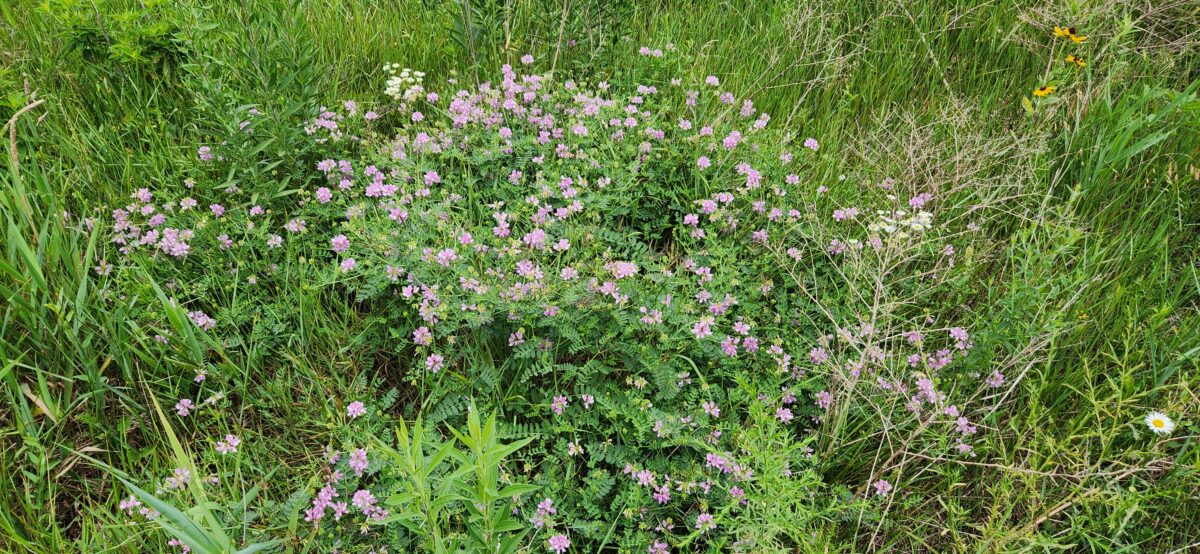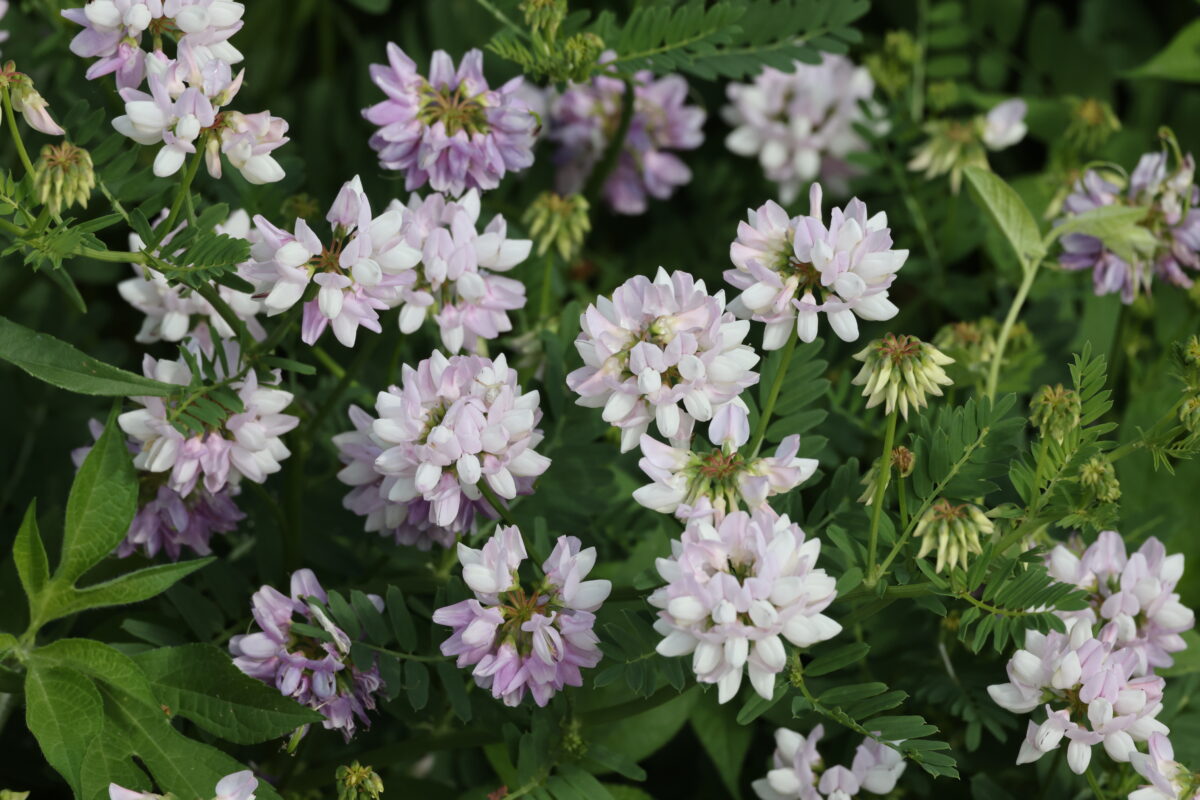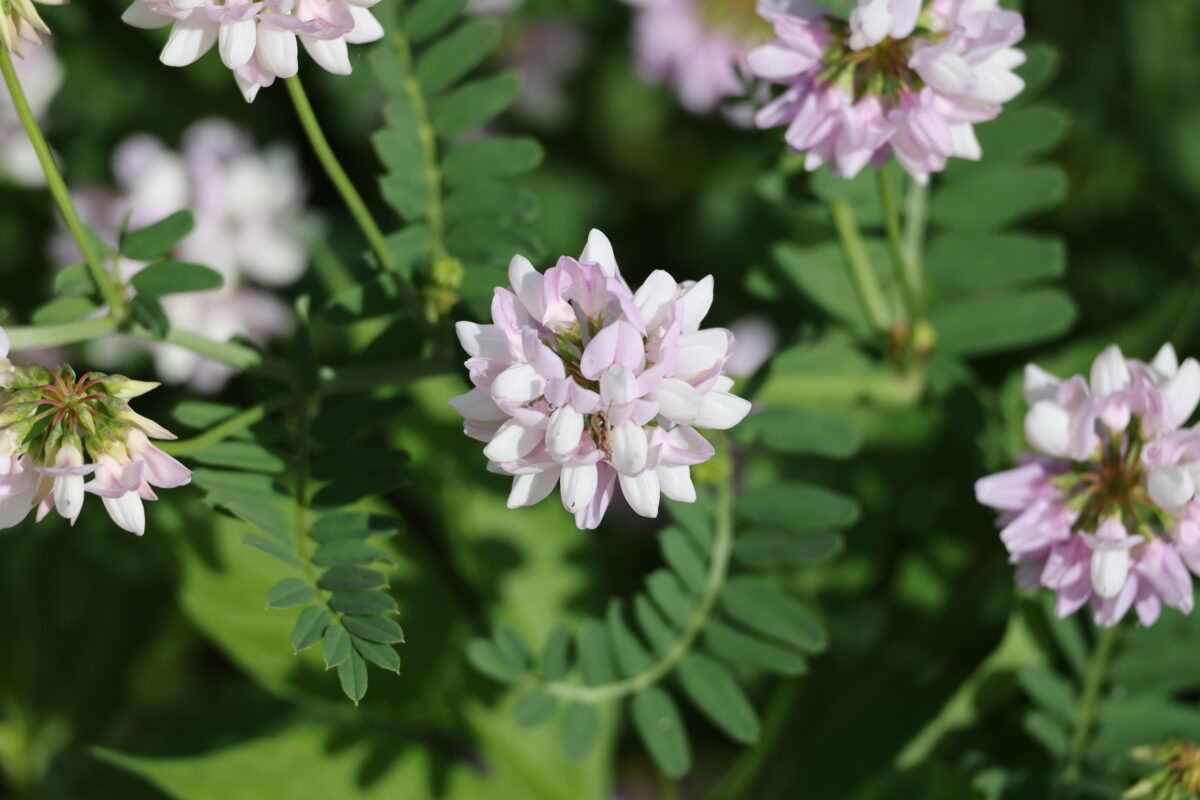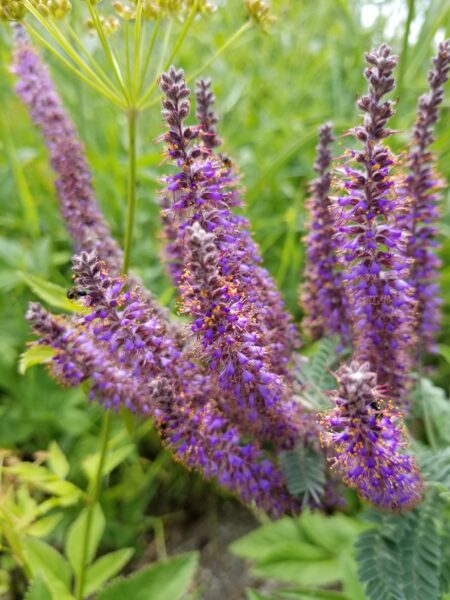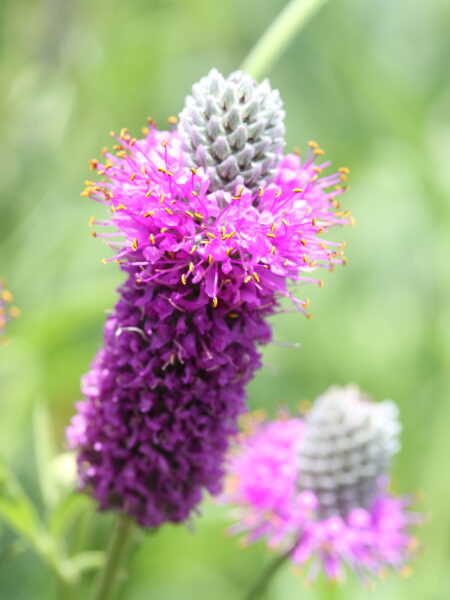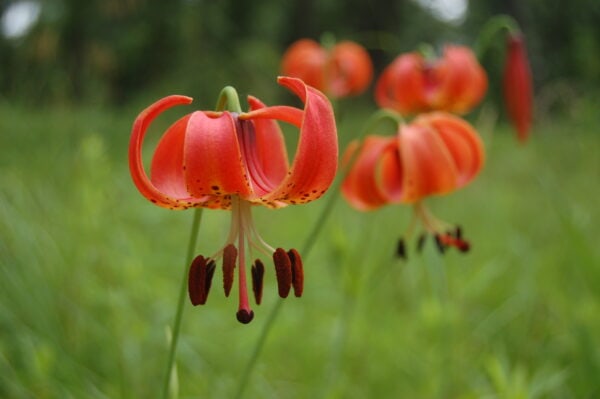
Megan Sprovach
Tallgrass Restoration, Crew Leader
If you’re a gardener or a friend to bees, you may have been tempted to plant crown vetch in your flower beds. It grows quickly, it’s easy to take care of, and its flowers are pretty and prolific. Yet while crown vetch may seem like a dream plant for well-manicured gardens, it can be a nightmare for people trying to establish a natural area.
What is Crown Vetch?
Crown vetch is a perennial broadleaf plant in the pea family. It prefers sunny, well-drained habitats, especially prairies with disturbed soil. The dense mats that it forms make it difficult for anything else to grow. Crown vetch gets its name from the crowns of pink to purple flowers that it produces from May through August. Oftentimes, the lower petals on each flower are paler than the upper petals. Each leaf is made of a stalk lined by 11 to 25 leaflets, with each leaflet having a tooth-like tip. Unlike many plants in the pea family, crown vetch does not produce tendrils.
Where Did It Come From?
Crown vetch is native to Europe, Asia, and Africa. In addition to its use as a garden ornamental, crown vetch has been frequently planted along roadsides to beautify them. It was once widely used as erosion control on steep slopes until people learned that it had a shallow root system and was better at hiding erosion rather than preventing it. It is still being used today in various seed mixes designed to attract bees for honey production.
What is its Life Cycle?
Crown vetch spreads very quickly. Above ground, its plentiful flowers produce an abundance of beans throughout the summer. Below ground, it spreads via rhizomes that can grow up to 10 feet long. The roots grow nodules that house nitrogen-fixing bacteria, altering the nutrient balance of the soil.
How Can You Control it?
Crown vetch is easy to establish and hard to remove. It is possible to remove it by hand, but all rhizomes must be removed to prevent them from resprouting. To make it easier, try using garden tools such as a soil knife to loosen the soil around the plant.
Using herbicide is likely to be the most effective method for controlling crown vetch, and there are a few options. Herbicides containing aminopyralid are highly effective against plants in the pea family such as crown vetch, while being less harmful to grasses, sedges, and woody plants. However, aminopyralid can harm locust and Kentucky coffee trees, so take care to avoid spraying near these species.
Triclopyr is another option that will not damage grasses and sedges, although it may not be quite as effective as aminopyralid. Glyphosate can be effective if used in the early spring, before flowers arrive. Glyphosate is a non-selective herbicide, so you need to be careful to only apply it to the intended target.
What Can You Plant Instead?
If you would like to add some pretty flowers to your prairie or garden instead of crown vetch, you’re not short of candidates. Leadplant (Amorpha canescens) is an attractive summer blooming option. The leaves have a layer of fuzz that gives them a frosty appearance, as well as striking purple flowers. Purple prairie clover (Dalea purpurea) is another low growing option with striking purplish-pink blooms in the summer.
Other options for more striking purple or blue color would be wild lupine (Lupinus perennis) or blue false indigo (Baptisia australis). Both have striking blooms that will catch your eye, however, the lupine is a bit picky about where it grows, and the indigo is not completely native to this area, but also not invasive.

